Kyivan Cave Monastery
Kyivan Cave Monastery (Києво-Печерська Лавра; Kyievo-Pecherska Lavra). An Orthodox monastery in Kyiv. It was founded by Saint Anthony of the Caves in the mid-11th century near the village of Berestove in a cave that the future metropolitan of Kyiv, Ilarion (see Metropolitan Ilarion), had excavated and lived in until 1051. The first monks excavated more caves and built a church above them. The monastery’s first hegumen was Varlaam (to 1057). He was succeeded by Saint Theodosius of the Caves (ca 1062–74), who introduced the strict Studite rule.
The Kyivan princes and boyars generously supported the monastery, donating money, valuables, and land, and building fortifications and churches; some even became monks. Many of the monks were from the educated, upper strata, and the monastery soon became the largest religious and cultural center in Kyivan Rus’. Twenty of its monks became bishops in the 12th and 13th centuries. Saint Theodosius of the Caves’s ‘Teachings,’ Nestor the Chronicler’s ‘Story about Saints Borys and Hlib,’ ‘Life of Theodosius of the Caves,’ Povist’ vremennykh lit (Tale of Bygone Years), and the Kyivan Cave Patericon, among others, were written there. Foreign works were translated, and books were transcribed and illuminated. Architecture and religious art (icons, mosaics, frescoes)—the works of Master Olimpii, Deacon Hryhorii, and others—developed there (see Kyivan Cave Monastery Icon Painting and Art Studio). Many folk tales and legends eventually arose about its saintly figures and the miraculous construction of its main church, the Dormition Cathedral of the Kyivan Cave Monastery. Early research on the monastery was done in the 17th century by Sylvestr Kosiv and Atanasii Kalnofoisky.
The monastery was sacked several times, particularly in 1096 by the Cumans, in 1169 by Prince Andrei Bogoliubskii of Vladimir-Suzdal, in 1203 by Prince Riuryk (Vasylii) Rostyslavych and the Chernihiv princes, and in 1240 by the Mongol Batu Khan. Each time it was rebuilt, new churches were erected, and the underground tunnels of caves and catacombs expanded. After a period of non-activity it was rebuilt in 1470 by Prince Semen Olelkovych, but in 1482 the Tatars of the Crimean Khanate burned it down. It was eventually again rebuilt, and in the late 16th century it received stauropegion status from the Patriarch of Constantinople, freeing it from the control of the local metropolitan. By that time consisting of six cloisters, the monastic complex was designated a lavra.
For a few years after the 1596 Church Union of Berestia the Uniate Catholics fought the Orthodox for control of the monastery, but the Orthodox retained control. In 1615 Archimandrite Yelysei Pletenetsky established the first printing press in Kyiv at the Kyivan Cave Monastery Press, which became an important center of publishing in Ukraine. Archimandrite (later Metropolitan) Petro Mohyla restored and embellished the monastery. In 1631 he opened the Kyivan Cave Monastery School and introduced a ‘western’ curriculum; in 1632 it was merged with the Kyiv Epiphany Brotherhood School to form a college (later called the Kyivan Mohyla Academy). Following the Pereiaslav Treaty of 1654, the period of the Ruin, and the subjugation of the Ukrainian Orthodox church by Moscow, in 1688 the lavra became directly subordinate to the Moscow patriarch, retaining its stauropegion status.
In 1718 a fire damaged most of its buildings, including the Dormition Cathedral of the Kyivan Cave Monastery and the Kyivan Cave Monastery Press, and destroyed the library and archive. Restorations lasted over 10 years. The Kyivan Cave Fortress was built around the monastery in the 18th century, and then expanded in the 19th century. The monastery’s cultural influence was later severely undercut by the Russian government’s 1720 prohibition on the printing of new books and the imposition of the censorship on all publications by the Russian Holy Synod. By the 18th century the monastery had acquired a great deal of wealth. It owned 3 cities, 7 towns, 200 villages and hamlets, 70,000 serfs, 11 brickyards, 6 foundries, over 150 distilleries, over 150 flour mills, and almost 200 taverns. In 1786 the Russian government secularized its property and made it a dependent of the state. At the same time the custom of electing the council elders, its governing body, was abolished. They were thereafter appointed by the metropolitan of Kyiv, who also became the archimandrite and had his residence within the monastery’s precincts. Russification of the monastery began towards the end of the 18th century and increased with time.
Prior to the Revolution of 1917 there were over 1,200 monks and novices at the monastery. It was one of the most famous centers of religious life in the Orthodox world and attracted hundreds of thousands of pilgrims. Its best-known sacred objects were the relics of its saintly monks who had been canonized by Metropolitan Petro Mohyla in 1643. The caves (some of them dating from the Neolithic Period) in which they lived and were buried, and from which the monastery’s name is derived, form two underground labyrinths of tunnels, cells, and catacombs excavated in soft sandstone and loess. The labyrinths (the Far Caves and Near Caves) are 1.5 m wide, up to 2 m high, and 400 m apart. Burial niches in their walls are 0.5 m deep, 2 m long, and 1 m high; many still contain the mummified remains of monks and saints. (See Plan of the Far Caves (1638); Plan of the Near Caves.) Burial niches in their walls are 0.5 m deep, 2 m long, and 1 m high; many still contain the mummified remains of monks and saints. (See monk’s cell in the Near Caves; tunnels of the Far Caves; monk’s cell in the Far Caves.) Several underground churches and chapels, such as Varlaam’s Church in the Near Caves and Church of Saint Theodosius in the Far Caves, are located at the Kyivan Cave Monastery.
In 1921–2 the Soviet authorities confiscated many of the relics and precious historical and artistic objects belonging to the monastery and converted a number of buildings to commercial and other use. Many of the monastery’s monuments and collections became part of the Lavra Museum of Religious Cults and Way of Life, which also contained the collections of several Kyiv museums (eg, the Kyiv Museum of Church Antiquities, the Kyiv University Museum, and the Historical Museum of the Ukrainian SSR). In 1926 the Soviet Ukrainian government closed down the monastery completely and turned its grounds (22 ha) into a state museum-preserve—the All-Ukrainian Museum Quarter (Horodok), which contained several museums (particularly of antireligious propaganda), archives, libraries, and workshops. In 1934 the museum quarter was abolished, and many of its collections were gradually transferred to new museums in Kyiv. In 1941 Soviet forces retreating from the German advance mined the main church, the Dormition Cathedral of the Kyivan Cave Monastery, which once housed the legendary miracle-working icon of the Dormition; the mines exploded on 3 November 1941 after the Germans had occupied Kyiv.
After the Second World War the lavra preserve was restored and renamed the Kyivan Cave Historical-Cultural Preserve (in 1996 the complex was granted a national preserve status and assumed its present name: the National Kyivan Cave Historical-Cultural Preserve). Located there are several museums and institutions. Also on the preserve’s grounds are the National History Library of Ukraine and the Ukrainian Society for the Protection of Historical and Cultural Monuments. From the end of the Second World War to 1961 a Russian Orthodox church monastery was allowed to function at the lavra; it had over 100 monks.
During the celebration of the millennium of East Slavic Christianity in 1988 (see Christianization of Ukraine), the Far Caves of the monastery were ceded to the Orthodox church. Since 1992 they have been under the control of the Ukrainian Orthodox Church-Moscow Patriarchate (UOC-MP). The Ukrainian Orthodox Church-Kyiv Patriarchate, in turn, pressed for a concession on the grounds of the Cave Monastery; its efforts were unsuccessful, however, owing to the strong protests of the UOC-MP. In 1998–2000 the Dormition Cathedral of the Kyivan Cave Monastery was rebuilt by the city of Kyiv. Upon completion it was turned over to the UOC-MP.
The Cave Monastery is rich in architectural monuments. Thirty-seven of them were built before the 20th century. Some, like the Dormition Cathedral built in 1073–8 and the Main Gate with the Holy Trinity Church (1106–8) above it, have been rebuilt several times. After the 1718 fire these buildings were painted and ornamented in the baroque style by the painters from the Kyivan Cave Monastery Icon Painting and Art Studio; their frescoes depicted hetmans, princes, and metropolitans. Prior to its demolition in 1941, the Dormition Cathedral of the Kyivan Cave Monastery contained the tombs of Pamva Berynda, Yelysei Pletenetsky, Prince Kostiantyn Ostrozky, Metropolitan Petro Mohyla, and other prominent nobles and personalities. Construction of the monastery’s other churches was funded in the 17th and 18th centuries by Cossack hetmans and officers: the Church of the Elevation of the Cross, overlooking the Near Caves (1700); the All-Saints Church above the Economic Gate, funded by Hetman Ivan Mazepa (1696–8); the Tower-Church of Saint John the Calybite (Kushchnyk), Maliarna Tower, Onufriivska Tower, Hodynnykova Tower, and the fortified stone walls around the monastery; the Church of the Conception of Saint Anne (1679) and the Church of the Nativity of the Holy Mother of God (1696), both by the Far Caves; and the Resurrection Church (1698). In the 1720s cells for the council elders, a new printing house, a bakery, and other facilities were built. Many of the churches and buildings were altered by later restorations. The monastery's Great Bell Tower (96.5 m high), designed by the architect Johann Gottfried Schädel, was built in 1731–44 in the Classicist style. Square bell towers near the Far (1754–61) and Near Caves (1759–63) were erected by the monastery’s master builder Stepan Kovnir. All bells were removed by the Soviet authorities in 1931–2. In the 19th and 20th centuries many ancient buildings were torn down or rebuilt in the official Russian synodal or Empire style. Several new churches (eg, the Refectory Church, 1893–5) were built in this style.
BIBLIOGRAPHY
Bolkhovitinov, E. Opisanie Kievo-Pecherskoi Lavry (Kyiv 1831)
‘Kievo-Pecherskaia lavra v eia proshedshem i nynishnem sostoianii,’ KS, 1886, nos 5–11
Goetz, L. Das Kiever Höhlenkloster als Kulturzentrum des vormongolischen Russlands (Passau 1904)
Titov, F. Putevoditel' pri obozrenii Kievo-Pecherskoi lavry (Kyiv 1910)
Ripets'kyi, M; Popovych, D. Kyïvo-Pechers'kyi monastyr i ioho podvyzhnyky (Mundare 1954)
Kyïvs'kyi derzhavnyi zapovidnyk-muzei ‘Kyievo-Pechers'ka Lavra’: Korotkyi putivnyk (Kyiv 1957)
Logvin, G. Kievo-Pecherskaia Lavra (Moscow 1958)
Kyievo-Pechers'kyi derzhavnyi istoryko-kul'turnyi zapovidnyk (Kyiv 1971)
Kilesso, S. Kievo-Pecherskaia lavra (Moscow 1975)
Krykotun, V. Za muramy lavry (Pro rol' Kyievo-Pechers'koï lavry u suspil'no-politychnomu zhytti Rosiï i Ukraïny u druhii polovyni XVIII–pochatku XX st. (Kyiv 1979)
Petrenko, M. Kyievo-Pechers'kyi derzhavnyi istoryko-kul'turnyi zapovidnyk: Putivnyk (Kyiv 1979)
Seventeenth-century Writings on the Kievan Caves Monastery (Cambridge, Mass 1987)
Kibalnik, Iu. (ed). Ocherki istorii Kievo-Pecherskoi lavry i zapovednika (Kyiv 1992)
Stepovyk, D. Kyievo-Pechers'ka lavra (Kyiv 1993)
Kolpakova, V.; Zhylenko, I. Dyva pecher lavrs'kykh (Kyiv 1997)
Stepovyk, D. Istoiia Kyievo-Pechers'koï lavry (Kyiv 2001)
Kyievo-Pechers'ka lavra u chasy Druhoï Svitovoï Viiny (Kyiv 2016)
Vadym Pavlovsky
[This article was updated in 2021.]

.jpg)
.jpg)
.jpg)
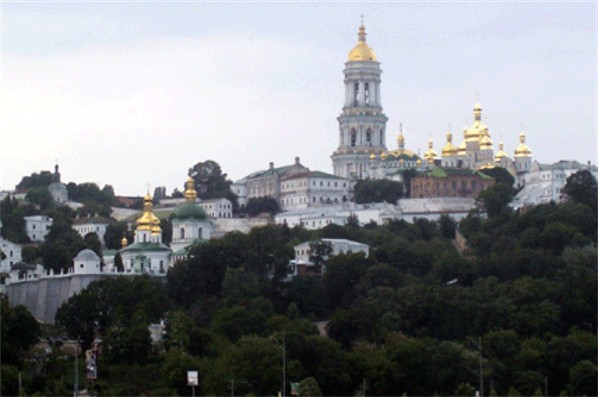
.jpg)
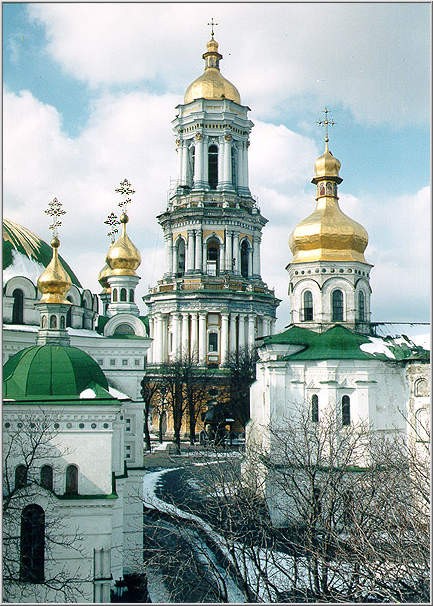
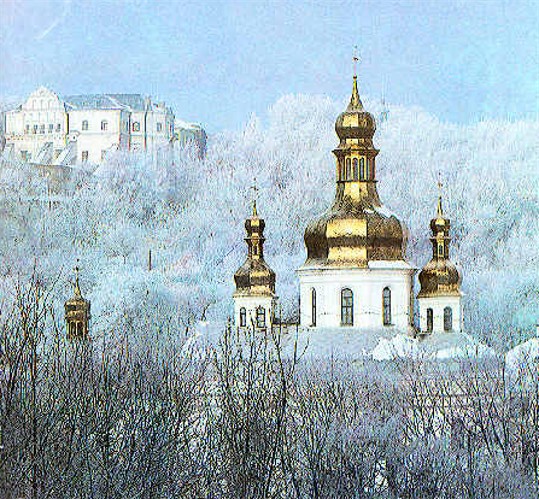
.jpg)
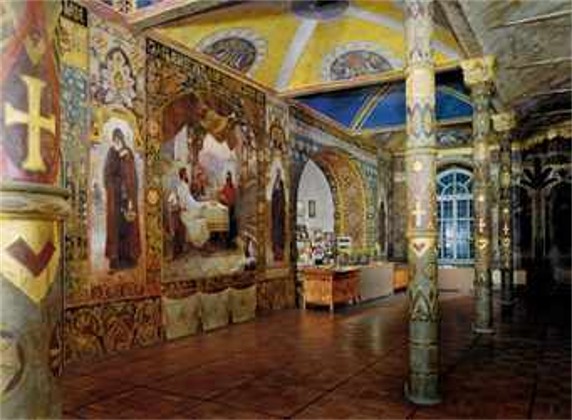
.jpg)
.jpg)
.jpg)
.jpg)
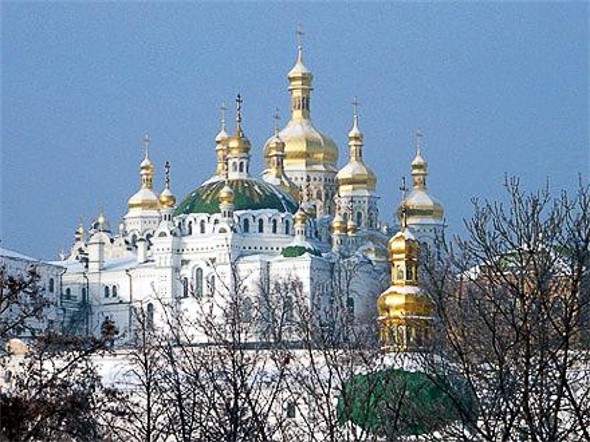
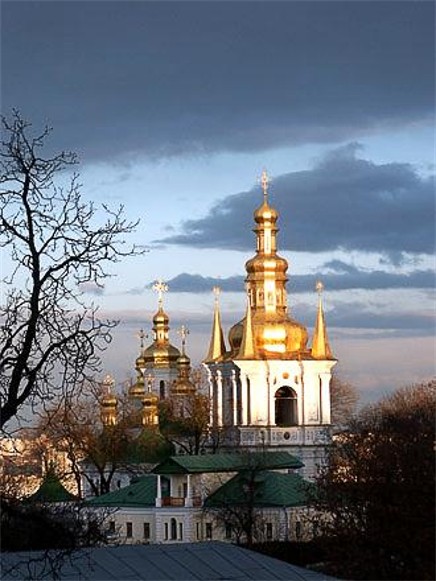
.jpg)
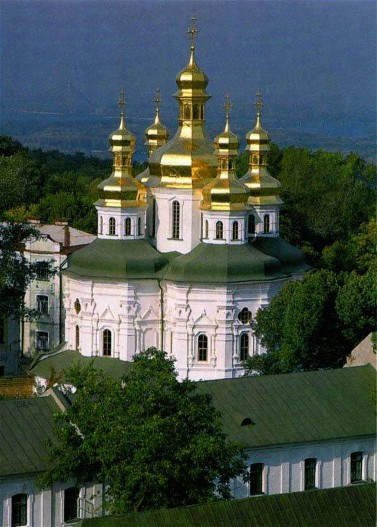
.jpg)
.jpg)
.jpg)
.jpg)